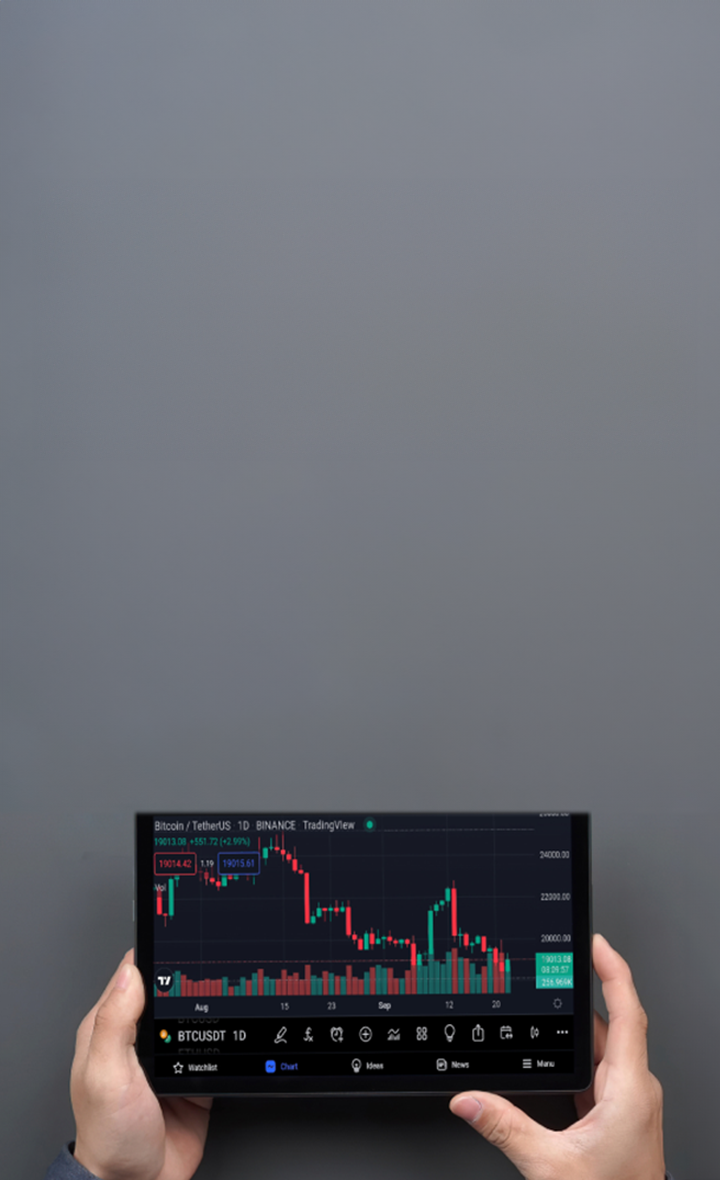

Trading Vs Investing: What’s the Difference?
What is Trading?
Trading is the active buying and selling of financial instruments to capture short to medium term price moves. Traders focus on entries and exits, position sizing, and risk control. Compared with investing, trading typically uses shorter time frames, higher turnover, and more technical analysis trading strategies.
A key advantage of trading is the practice of using short-selling to gain potential profit when prices decrease. Short selling allows traders to profit even in fluctuating markets and bearish conditions. In this scenario, investors will likely wait for the market to improve, whereas traders will look for opportunities within clear rules and risk limits.
Types of Trading Strategies
Day Trading
Open and close positions within the same day. Relies on intraday charts, liquidity, and strict risk rules. How day trading works. Traders must close their trades within the day to avoid overnight risk.
This strategy involves technical analysis, including chart patterns and indicators with clear price action rules. Day trading strategies.
Swing Trading
Hold for days or weeks to capture upswings and downswings. Combines chart patterns, momentum, and basic catalysts. What is swing trading. The length of the trade depends on how long the swing continues.
Swing traders use technical tools to spot trend changes and may apply fundamental context when needed. Swing trading strategies.
Position trading
Hold for weeks to months based on broader trends. Mix of technical confirmation and fundamental context to capture long-term moves. Trend trading keys.
Position traders often rely more on macro and valuation drivers to align with the dominant trend. Top-down analysis.
Scalping: Seconds or minutes, many small trades seeking tiny edges. Requires discipline and fast execution.
This ultrashort approach emphasizes tight risk limits and speed. Scalping strategy.
Trend Trading: Follow directional momentum with tools like moving averages and higher high or lower low structures.
Traders use moving averages, structure, and confluence to join established trends. Trend lines and indicators like MACD or RSI help with confirmation.
Range Trading: Buy near support and sell near resistance in sideways markets, often using oscillators.
Structure and oscillators define zones and entries during consolidation. Spot market basics can also inform range context.
News Trading: Trade around economic releases or company events with predefined scenarios and risk limits.
Volatility often increases during scheduled releases, so planning and risk caps are essential. Economic calendar checks help set expectations.
Algorithmic Trading: Rules based execution that triggers when conditions are met, from simple signals to advanced models.
What is Investing?
Recommended images:
Charts and coins
Investing is acquiring assets with the aim of long term wealth building. Investors accept near term volatility in exchange for compounding over years. Compared with trading, investing emphasizes business quality, valuation, and patience, often starting with market fundamentals and risk-reward discipline.
Types of Investment Strategies
Buy and Hold
This is a passive approach in which an investor acquires assets or securities, like exchange-traded funds, and holds them for an extended period. The aim is steady accumulation despite volatility. Tools like a trading calculator can help plan position size and risk. Past performance does not guarantee future results.
Value Investing
Select and own stocks trading below intrinsic value, expecting appreciation as the market reprices. CFDs vs stocks can frame exposure choices.
Growth Investing
Emphasizes company expansion and revenue acceleration. Example case studies can illustrate drivers behind growth multiples.
Dividend Growth Investing
Focuses on dividend-paying companies with a record of increasing payouts to build income streams over time. Blue-chip examples can help illustrate durability.
Key Differences Between Trading and Investing
Time Frame
Investing takes months to decades to build wealth, whereas trading spans minutes to months with faster decision cycles. Trader vs investor time frames show how approaches differ.
Tools and Techniques
Trading leans on technical analysis, real-time data and charts, while investing focuses more on fundamentals and valuation. MetaTrader 5 platform provides charting and indicators to support decision making.
Costs
Trading usually incurs higher costs due to frequent orders, while investing has fewer transactions. Trading conditions outline spreads, swaps and execution factors to consider.
Time and Effort
Trading: research, planning, and monitoring during market hours; rule-based execution; consistent journaling and review cycles. Account types and platform setup influence workflow.
Investing: upfront planning, periodic contributions, and scheduled portfolio check-ins or rebalancing. Understanding leverage and margin helps manage risk across approaches.
Pros and Cons
Pros | Cons | Pros | Cons |
Potential for swift profits. | Carries more risks due to volatile conditions. | Potential for stable, long-term growth. | Profits take time. |
Active engagement with markets. | Time-consuming. | The hands-off approach to the market. | Requires discipline as gains don’t come immediately. |
Which Should I Choose?
Use this quick framework to decide between trading vs investing:
Time horizon: If you need funds within a year, prioritize capital preservation. For multi-year goals, investing usually fits better.
Drawdown tolerance: If large swings create stress, favor diversified investing and measured risk.
Time available: If you cannot monitor markets and maintain rules, keep trading exposure small or skip it.
Tax and costs: Consider the effect of turnover and account type on after-tax returns.
Use this quick framework:
Time horizon: If you need access to funds within a year, prioritize capital preservation. For multi year goals, investing usually fits better.
Drawdown tolerance: If large swings create stress, favor diversified investing and measured risk.
Time available: If you cannot monitor markets and maintain rules, keep trading exposure small or skip it.
Tax and costs: Consider the effect of turnover and account type on after tax returns.
Bottom line: the difference between trading and investing comes down to speed and precision versus patience and compounding. Match the approach to your goals, your tolerance for drawdowns, and the time you can commit, then use rules to stay consistent.
If you decide to give trading a go, open an account with TMGM here. Trading Vs Investing: What’s the Difference?
Handeln Sie heute smarter




Frequently Asked Questions (FAQs) about Trading vs Investing
Is trading riskier than investing
Which is better for beginners
How are taxes different
Can I do both


Konto beantragen
einzahlen
Handel beginnen


